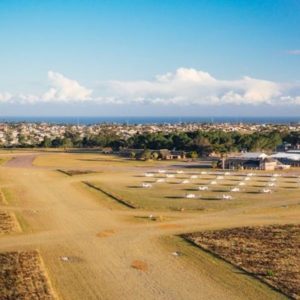No products in the cart.
Air Traffic Control Courses
Showing the single result
Filters Sort results
Reset Apply
Aerodrome Flight Information Service Training taken at Port Alfred, South Africa Last Updated: 30-11-2022 |
Browse a wide range of Air Traffic Control and Aerodrome Flight Information Services on AvPay – The Aviation Marketplace & Directory.
Becoming an Air Traffic Controller (ATC) is a structured process that typically involves specific education and training requirements, followed by on-the-job training. The duration of the process can vary depending on the specific country, the type of ATC position you’re aiming for, and the individual’s progress through the training programs. The specific eligibility requirements can vary by country and ATC facility, but typically include being a certain age (often 18 or older), having a high school diploma or equivalent, and meeting medical and security clearance standards. Many ATC positions require a college degree, although some may accept equivalent work experience or a combination of education and experience. Once you meet the initial eligibility requirements, you’ll need to complete an ATC training program, which is typically provided by the country’s aviation authority or a certified ATC training institution. The duration of these programs can vary but often lasts around 2 to 4 years. There are different types of ATC positions, such as tower controllers, approach and departure controllers, and en-route controllers. The specific training and exams you’ll take may vary depending on the type of ATC position you’re pursuing. During ATC training, you’ll go through various modules that cover topics like airspace and procedures, communication, radar operation, and aircraft separation. You’ll also receive practical training in a simulated or live ATC environment. Throughout your ATC training, you’ll be required to pass several exams, both written and practical. This written exam assesses your understanding of basic ATC concepts, regulations, and procedures. Depending on your chosen specialization (tower or radar control), you’ll need to pass exams related to your specific duties. Air Traffic Control Skills Assessment (ATSA) in some countries, a candidate must take the ATSA, a specialized aptitude test that assesses skills such as memory recall, situational awareness, and spatial orientation. After successfully completing the required exams, you’ll move on to on-the-job training, which typically takes place under the supervision of experienced controllers. The duration of this training phase can vary but often takes around 1 to 2 years. Once you’ve completed your training and demonstrated your competence, you’ll be certified as an Air Traffic Controller and may start working independently. It’s important to note that the specific steps and requirements can vary from country to country, and the process may be subject to change over time. Additionally, the competition for ATC positions can be intense, as they are highly sought after due to their importance in ensuring aviation safety. Therefore, candidates should be prepared to meet the eligibility criteria and perform well in the required exams and training to become successful Air Traffic Controllers.

